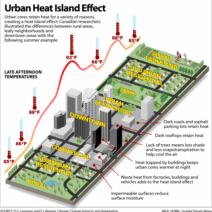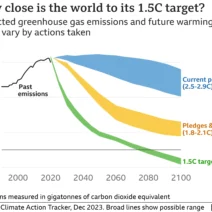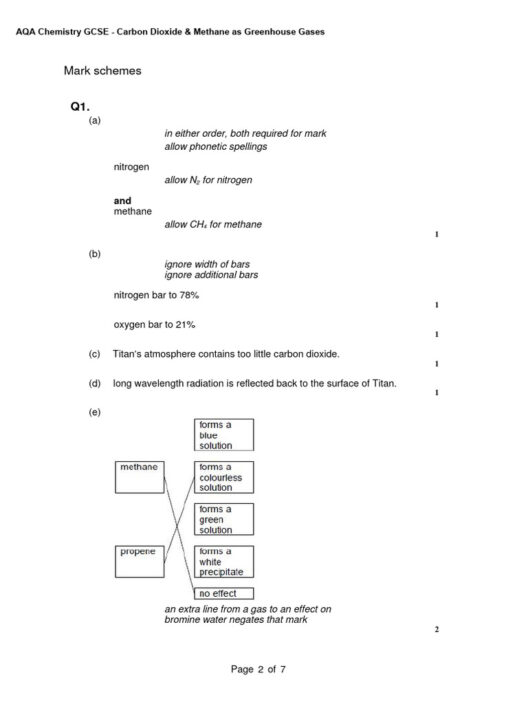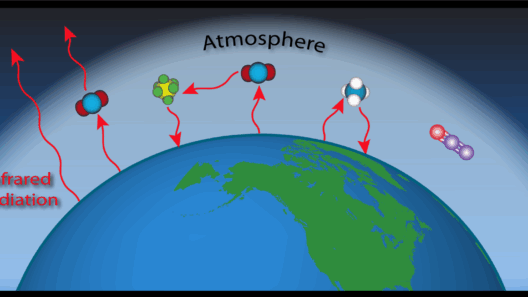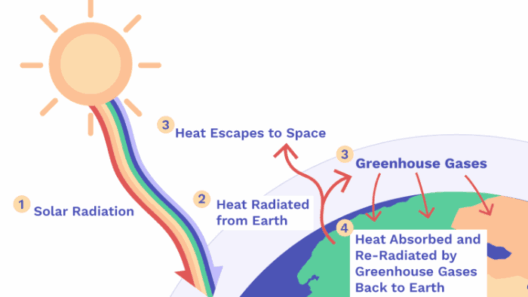The greenhouse effect is a critical concept that lies at the heart of discussions regarding climate change. It is a natural phenomenon, but human activities are amplifying it, leading to environmental consequences that threaten ecosystems and our way of life. Understanding the greenhouse effect illuminates the intricate relationship between the Earth’s atmosphere, solar radiation, and climate patterns. This article delves into the various aspects of the greenhouse effect, unraveling its mechanisms, significance, and repercussions on our planet.
Scientific Foundations of the Greenhouse Effect
To comprehend the greenhouse effect, one must first recognize the role of the Sun as the primary energy source for Earth. Solar radiation reaches our planet’s surface, where it is absorbed and subsequently re-emitted as infrared radiation. However, not all of this radiation escapes back into space. Certain gases in the Earth’s atmosphere, known as greenhouse gases (GHGs), trap some of this infrared radiation, preventing it from dissipating. This is analogous to the way a greenhouse retains heat, hence the name.
Key GHGs include carbon dioxide (CO2), methane (CH4), nitrous oxide (N2O), and water vapor. Each of these gases has varying degrees of heat-trapping capability, with methane, for example, being significantly more effective than CO2, albeit present in smaller quantities. The balance of these gases determines the greenhouse effect’s intensity. When their concentrations rise, usually due to human activities such as fossil fuel combustion, deforestation, and industrial processes, so does their collective contribution to the greenhouse phenomenon, leading to a warming effect known as global warming.
The Mechanics of the Greenhouse Process
Understanding how greenhouse gases interact with solar energy sheds light on the broader implications of the greenhouse effect. Solar radiation penetrates the atmosphere primarily as visible light, which is absorbed by the surface of the Earth, warming it. The Earth, in turn, releases this energy as infrared radiation. Greenhouse gases absorb some of this outgoing radiation and reradiate it in all directions, including back towards the Earth’s surface. This feedback loop effectively increases the average temperature of the atmosphere and surface, resulting in a phenomenon often likened to wrapping the Earth in a blanket.
Notably, the greenhouse effect is not uniform across the globe. Various factors, including geographical location, season, and atmospheric conditions, influence its intensity. For instance, urban areas tend to experience an intensified greenhouse effect due to the heat generated by buildings, vehicles, and industries. Furthermore, polar regions are particularly sensitive to changes in greenhouse gas concentrations, resulting in alarming feedback mechanisms such as the melting of ice caps and the release of additional methane trapped in permafrost.
Implications of the Greenhouse Effect
The ramifications of an intensified greenhouse effect are profound and multifaceted. Fluctuations in global temperatures lead to shifts in weather patterns, resulting in increased frequency and severity of extreme weather events such as hurricanes, droughts, and floods. Ecosystems worldwide are being altered as species struggle to adapt to changing temperatures and shifting habitats. Migratory patterns are disrupted, leading to biodiversity loss and, ultimately, ecosystem imbalance.
Moreover, the greenhouse effect is intricately linked to other environmental challenges, such as ocean acidification and the depletion of the ozone layer. As CO2 levels rise, oceans absorb a significant portion, leading to increased acidity, which poses threats to marine life, including coral reefs and shellfish. Additionally, the altered climate conditions can exacerbate air pollution, directly impacting human health and well-being.
Societal Responses and Mitigation Strategies
Combatting the greenhouse effect requires a multifaceted approach encompassing individual, societal, and governmental actions. Awareness is the first step; educating the public about the significance of their choices related to energy consumption, transportation, and waste can lead to more sustainable lifestyles. Transitioning to renewable energy sources such as solar, wind, and hydropower is vital in reducing GHG emissions. Initiatives such as afforestation and reforestation can help enhance the planet’s ability to sequester carbon dioxide.
Governments and industries play a pivotal role in establishing regulations and policies aimed at curbing emissions. International agreements, such as the Paris Agreement, reflect a global commitment to limit temperature increases and promote sustainable development. Moreover, innovation in technology, including carbon capture and storage (CCS), presents a promising pathway to mitigating emissions from fossil fuel-dependent industries.
In conclusion, the greenhouse effect is a fundamental concept that underpins the current climate crisis. Understanding its workings, implications, and the urgent need for collective action is essential for mitigating its adverse effects. As stewards of the planet, it is imperative that concerted endeavors are made to restore balance to Earth’s climate system to ensure a sustainable future for generations to come.
